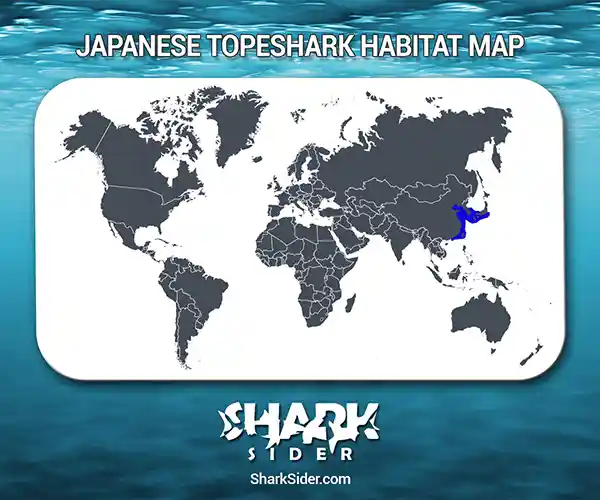The Japanese topeshark is a houndshark dwelling in the northwest Pacific between 40° N and 21° N.
Japanese Topeshark Scientific Classification |
|
| Kingdom | Animalia |
| Phylum | Chordata |
| Class | Chondrichthyes |
| Order | Carcharhiniformes |
| Family | Triakidae |
| Genus | Hemitriakis |
| Scientific Name | H. japanica |
Description
Male Japanese topesharks are 2.8 feet long, while females are 2.6-3.3 feet. The largest recorded male specimen was 3.6 feet, and the largest female was about 3.9 feet.
Their mouths are broadly arched and lined with small, blade-like teeth, while the snouts of this shark are long and pointed, with skin flaps covering the nostrils. The fins are slightly falcate in adults.
These sharks appear silvery grey, with white edges on the fins.
Where do they live
Map Of The Japanese Topeshark’s Habitat

The Japanese topeshark’s range encompasses part of the west Pacific, including China, Japan, Korea, and Taiwan.
It appears in both coastal waters and offshore waters at depths of 328 ft.
Behavior
Feeding
A possible diet includes cephalopods, crustaceans, and small fish.
Reproductive
They are ovoviviparous, with female sharks giving birth to a litter ranging from 8 to 22 pups. At birth, newborn sharks are about 7.8 inches long.
Interactions with humans
In 2019, the IUCN classified the Japanese topeshark as “Endangered” or “EN”. This is due to the shark being at risk of being overfished for consumption as well as a loss in habitat.
